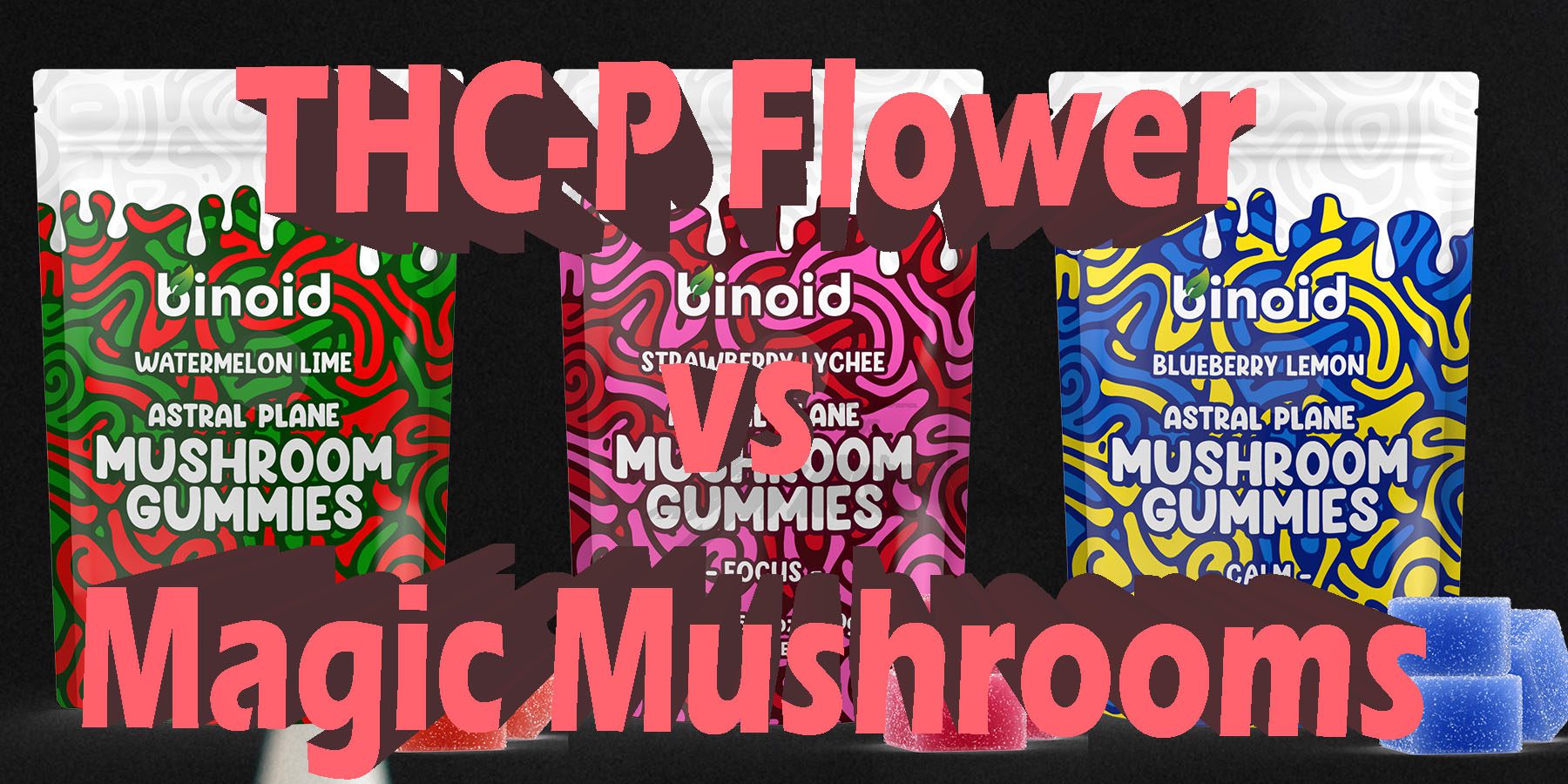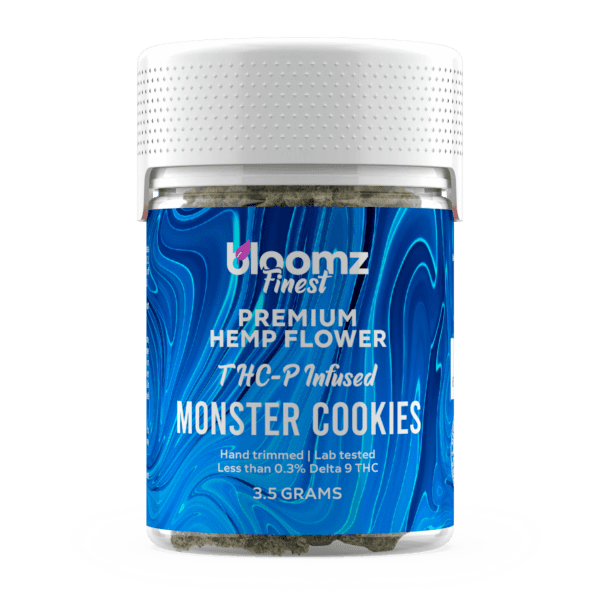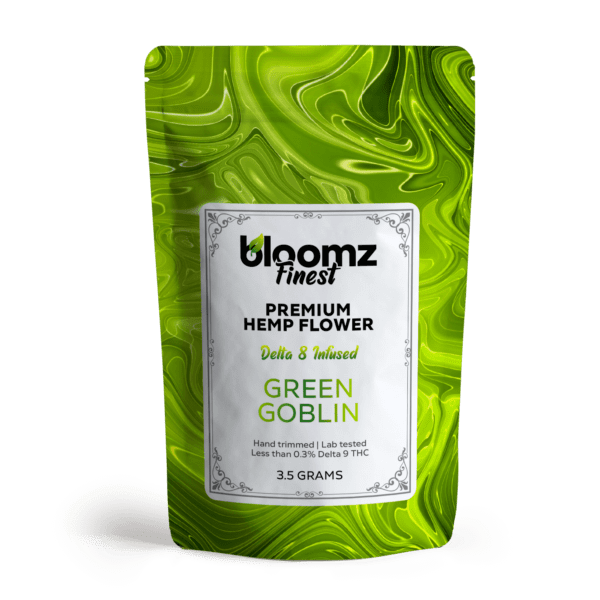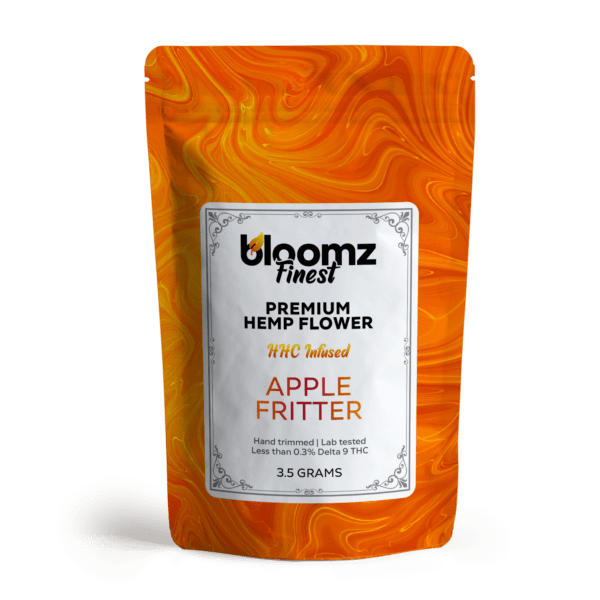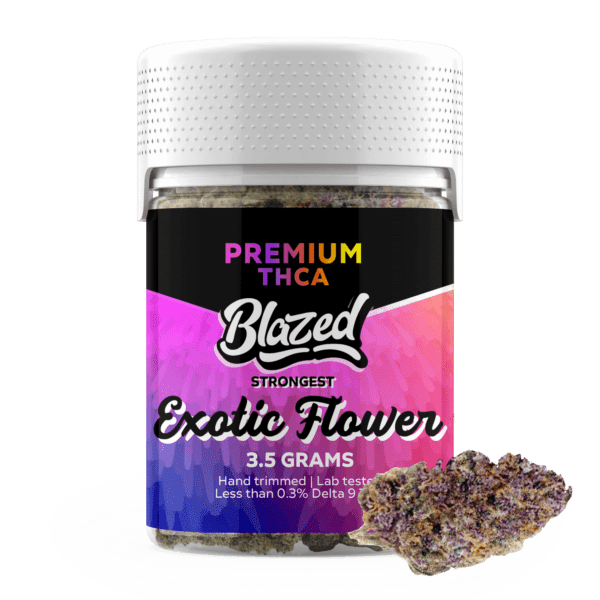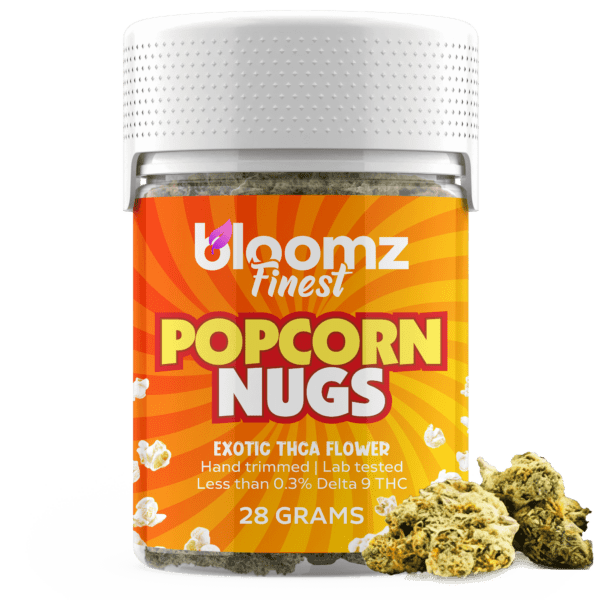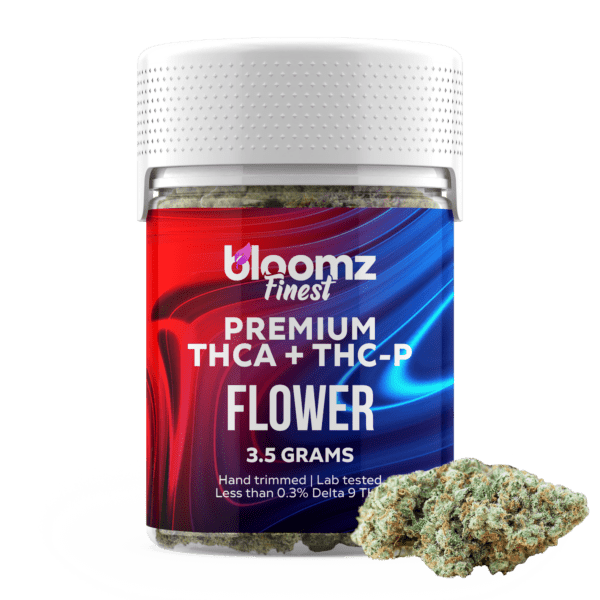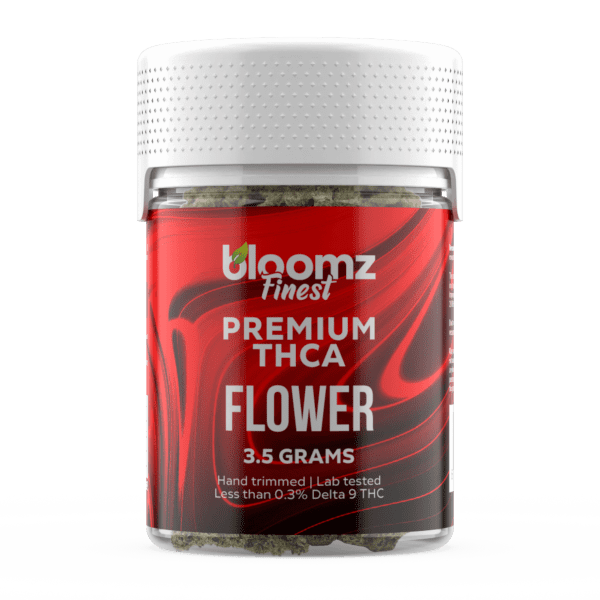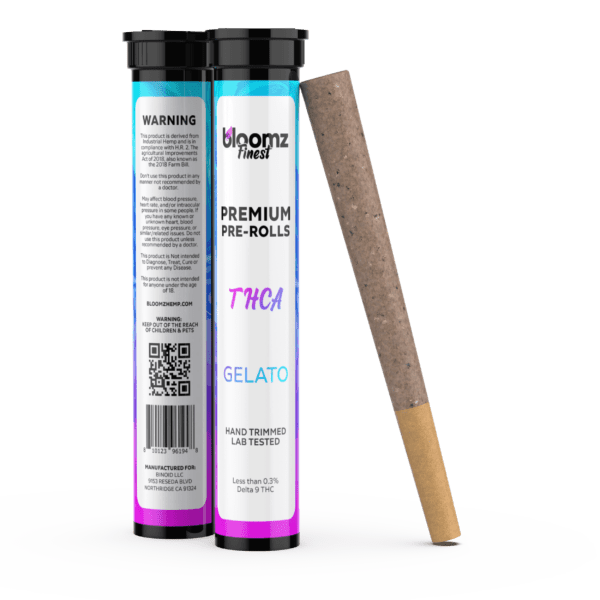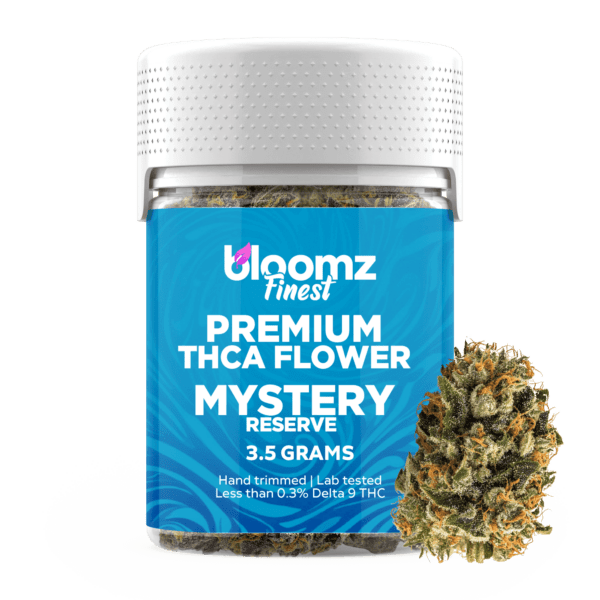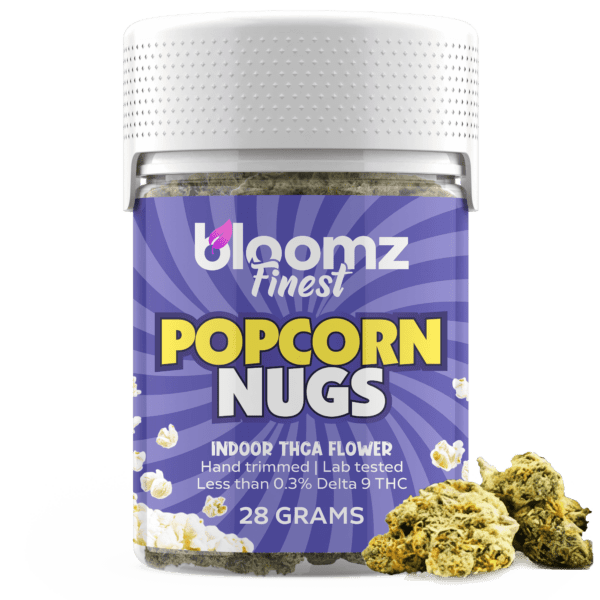In the grand and ever-unfolding story of humanity’s relationship with consciousness-altering substances, there are chapters dedicated to gentle companionship and then there are those dedicated to profound, earth-shaking revelations. Today’s exploration is firmly planted in the latter. We are venturing beyond the familiar foothills of mild relaxation and into the towering peaks where the very nature of perception is challenged and redefined. In one corner stands THC-P flower, the undisputed heavyweight champion of the cannabinoid world, a product of brilliant and audacious science that takes the concept of a euphoric high and launches it into the stratosphere.
In the other corner, we find the ancient and revered magic mushrooms, humble in form but containing the keys to a classic psychedelic cosmos, a realm of kaleidoscopic visions, ego dissolution, and deep, resonant introspection. This is not a simple comparison; it is a juxtaposition of two entirely different philosophies of profound experience—one that seeks to amplify reality to its most blissful extremes, and one that seeks to dissolve it and reveal what lies beneath.
TO BUY THC-P FLOWER CLICK HERE
Recommended products
Why It’s Important to Breakdown the Matchup of THC-P Flower vs. Magic Mushrooms
In an age where access to information and novel products is unprecedented, the responsibility for making informed and safe choices is more critical than ever, especially when dealing with substances of profound potency. The matchup between THC-P flower and magic mushrooms is a crucial and necessary analysis because it contrasts two titans of intensity that, while both exceptionally powerful, operate in completely different universes of effect.
A detailed breakdown is an essential exercise in harm reduction and expectation management, ensuring that experienced individuals considering these paths understand that they are not choosing between two similar levels of “strong,” but between two fundamentally different architectures of consciousness. To confuse the two, or to approach one with the mindset appropriate for the other, could lead to a deeply disorienting and unnecessarily challenging experience.
The most vital reason for this in-depth comparison is the profound qualitative difference in their effects. THC-P flower as an ultra-potent cannabinoid, delivers an experience that is a supercharged amplification of a familiar psychoactive state. It is a journey of immense euphoria, profound physical bliss, and intense sensory enhancement, but it operates within the known framework of a THC high. Magic mushrooms, containing psilocybin, are classic serotonergic psychedelics.
They do not amplify reality so much as they deconstruct and rebuild it, inducing a state of vivid visuals, deep emotional processing, altered thought patterns, and the potential for a complete dissolution of one’s sense of self. Understanding this distinction is paramount—it is the difference between preparing for the most intense sensory thrill ride imaginable and preparing for a deep, philosophical, and often spiritual dive into the very nature of your own mind.
Furthermore, their legal and safety profiles, while both demanding serious consideration, are starkly different. THC-P flower is a lab-synthesized cannabinoid applied to hemp, and its legality exists in a contentious gray area born from the 2018 Farm Bill, making it a target for state-level bans and federal scrutiny. Its primary safety concerns revolve around the purity of the synthesis process and the extreme psychological risks of overconsumption.
Magic mushrooms are federally illegal as a Schedule I controlled substance, carrying significant legal penalties in most of the country. Their primary safety concerns, beyond the legal, are psychological preparedness for a powerful trip and, if sourced from the wild, the lethal risk of misidentification. This breakdown clarifies these very different sets of risks—one of a novel, unregulated chemical in a gray market, the other of a natural, but federally prohibited, classic psychedelic.
Finally, this comparison serves the advanced user by clarifying intent. The pursuit of THC-P is often about exploring the absolute peak of euphoric and sensory experience, a hedonistic and powerful quest for bliss. The journey with magic mushrooms is typically undertaken with a different intention, one geared toward introspection, personal insight, spiritual exploration, or the desire to experience a truly novel and transformative state of consciousness. By laying out these distinct motivations and the experiences they lead to, we can help ensure that the chosen path aligns perfectly with the explorer’s ultimate goal, fostering a culture of respect, preparation, and intentionality for these two profoundly powerful substances.
Contender #1: THC-P Flower
In the rapidly advancing frontier of hemp-derived cannabinoids, THC-P flower has emerged as a true titan, a product that pushes the very boundaries of potency and has captured the attention of the most seasoned cannabis enthusiasts. It represents the cutting edge of cannabinoid science, a testament to what is possible when natural botanical forms are enhanced with exceptionally powerful, lab-refined compounds. To the eye, THC-P flower is indistinguishable from the highest-grade cannabis, boasting dense, trichome-covered buds and pungent, complex aromas.
However, its unassuming appearance belies an inner power that far surpasses that of its more common cannabinoid cousins. THC-P flower is not a plant that grows naturally; it is a carefully constructed product designed for an experience of unparalleled intensity, offering a journey into profound euphoria that is reserved for the most experienced and tolerant of users. Its existence is a direct consequence of both a landmark scientific discovery and the ongoing innovation within the legal hemp market.
The incredible power of this product is derived from a single, remarkable molecule: Tetrahydrocannabiphorol (THC-P), which was only recently identified in 2019 by a team of Italian researchers who were analyzing a particular cannabis strain. What they discovered was a naturally occurring analogue of THC that possessed a significantly different molecular structure. The key difference, and the source of its immense strength, lies in its alkyl side chain. While standard Delta 9 THC has an alkyl side chain with five carbon atoms, THC-P boasts a longer chain with seven carbon atoms.
This elongated structure dramatically increases its ability to bind with the CB1 receptors in the human brain—the primary receptors responsible for producing the psychoactive effects of cannabis. According to the initial research, THC-P exhibits a binding affinity for the CB1 receptor that is over 30x stronger than that of Delta 9 THC. This incredible affinity is the scientific explanation for its reputation as the most potent naturally-occurring phytocannabinoid discovered to date.
Recommended products
The creation of THC-P flower is a testament to the sophisticated manufacturing processes developed within the modern hemp industry. It is essential to understand that, like Delta 8 flower, THC-P flower is not a naturally grown product. Because THC-P exists in such minuscule concentrations in the actual cannabis plant, it isn’t feasible to extract it directly. Instead, the potent THC-P distillate used to create these products is synthesized in a laboratory, and then carefully applied to a base of high-quality hemp flower. The precision required in this process is paramount, as even a small miscalculation with such a potent compound could lead to an overwhelmingly intense product:
-
Sourcing Premium Hemp Flower: The process begins with the cultivation of top-tier, federally compliant hemp flower. This base flower, typically rich in CBD or CBG, is chosen for its excellent bud structure, vibrant terpene profile, and overall quality. The natural aromas and flavors of this premium hemp serve as the foundational canvas for the experience.
-
Laboratory Synthesis of THC-P: In a highly controlled laboratory setting, expert chemists use a starting material of legal hemp-derived CBD isolate. Through a complex, multi-step chemical process known as isomerization, the molecular structure of the CBD is rearranged to create the THC-P molecule. This is a highly specialized process that requires advanced equipment and expertise to ensure the final distillate is pure and free of unwanted byproducts.
-
Precision Infusion and Blending: This is the most critical manufacturing step. Due to the extreme potency of THC-P, it is rarely, if ever, applied to flower in its pure form. Instead, the THC-P distillate is typically blended with a less potent cannabinoid, such as Delta 8 THC, to create a more balanced and manageable, yet still incredibly powerful, final product. This carefully calculated blend is then applied to the hemp flower using methods like solventless cryo-infusion or light spraying to ensure a consistent and even coating.
-
Rigorous Third-Party Lab Testing: For a product this potent, independent verification is non-negotiable for any reputable brand. A sample of the final, infused THC-P flower is sent to an accredited third-party laboratory. The lab performs comprehensive tests to verify the exact potency of THC-P and other cannabinoids, and, just as importantly, to screen for any residual solvents, heavy metals, or other contaminants, ensuring the product is both accurately labeled and safe for consumption.
The market for THC-P flower, while more niche than that of other cannabinoids, offers several categories of products tailored to the experienced user. The primary distinctions between these products lie in the quality of the base hemp flower and the specific formulation of the cannabinoid blend used in the infusion. Given the extreme potency of THC-P, every product in this category should be approached with the utmost caution and respect, as they are all designed to deliver a profoundly powerful experience:
-
Indoor THC-P Flower: This represents the highest tier of THC-P flower products. It utilizes premium, indoor-grown hemp flower as its base, which provides a dense, visually perfect, and terpene-rich foundation. When infused with the potent THC-P distillate blend, the result is a connoisseur-grade product that offers a symphony of complex aromas and flavors alongside an incredibly intense psychoactive experience.
-
Outdoor THC-P Flower: For a more budget-conscious option, some brands may use sun-grown, outdoor hemp flower. While the buds might be less aesthetically perfect than their indoor counterparts, they can still serve as an effective carrier for the THC-P distillate. This option provides access to the powerful effects of THC-P at a more accessible price point for experienced users.
-
THC-P Nugs: This is the general term for the standard, trimmed buds of hemp flower that have been infused with THC-P. These are the most common form of the product, sold by weight in jars or bags. Regardless of the quality of the base flower, any THC-P nug is an exceptionally potent item that requires extremely cautious dosing.
-
THC-P Moonrocks: Representing the absolute apex of smokable potency in the hemp market, THC-P Moonrocks are an “experts only” product. They are created by taking a high-quality hemp nug, coating it in a sticky layer of a potent distillate blend containing THC-P, and then rolling the entire concoction in a thick layer of CBD or CBG kief. The resulting product is incredibly dense, heavy, and delivers an overwhelmingly powerful experience.
-
THC-P Pre-Rolls, Blunts & Joints: For convenience, some brands offer pre-rolled versions of their THC-P flower. These provide a ready-to-use option, but they also carry a significant risk for inexperienced users. A single standard-sized joint of this material is far too much for one person in one sitting. Responsible consumption of a THC-P pre-roll involves taking a single, small puff and waiting at least 20-30 minutes to assess the effects.
The use of familiar strain names on THC-P flower products follows the same logic as it does for Delta 8 flower, but the implications are amplified by the cannabinoid’s sheer strength. The strain name—be it an Indica, Sativa, or Hybrid—refers to the genetic profile of the base hemp flower used in the product. The terpenes of this base strain will absolutely influence and “steer” the direction of the experience, but the overwhelming character of the journey will be dictated by the profound potency of the THC-P itself. Think of the base strain as the specific landscape you are traveling through, while the THC-P is the high-speed vehicle propelling you through it at an incredible velocity:
-
Indica: When an Indica-dominant hemp strain with a relaxing terpene profile is infused with THC-P, the resulting experience is likely to be one of profound, full-body immersion and deep physical relaxation, coupled with an intensely euphoric and introspective mental state. The calming nature of the Indica terpenes may help to ground the overwhelming power of the THC-P, making it a choice for experienced users seeking a powerful, meditative, and couch-locking evening session.
-
Sativa: Using a Sativa-dominant hemp strain with an uplifting and energizing terpene profile as the base for THC-P flower creates an experience that can be incredibly expansive and cerebral. The stimulating terpenes might direct the intense psychoactivity towards creative thought, profound philosophical musings, and a powerful rush of euphoric energy. This combination is for the most adventurous of users and can be intensely stimulating and mentally active.
-
Hybrid: Hybrid strains offer a balanced foundation, and when infused with THC-P, they can produce a multifaceted experience of immense power. The effects can encompass both the heavy, blissful body sensations of an Indica and the racing, creative cerebral activity of a Sativa, all amplified to an extraordinary degree by the THC-P. This creates a complex and all-encompassing high that engages both mind and body with incredible force.
The legality of THC-P flower in the United States exists in the same complex and highly contentious gray area as Delta 8 THC, but arguably under even greater scrutiny due to its immense potency. The legal argument for THC-P is that, as a cannabinoid synthesized from hemp-derived CBD, it falls under the protection of the 2018 Farm Bill, which legalized hemp and all its derivatives so long as they contain less than 0.3% Delta 9 THC. However, this position is fragile.
The DEA’s stance on “synthetically derived tetrahydrocannabinols,” combined with the undeniable and powerful psychoactive nature of THC-P, makes it a prime target for regulatory action. Many of the state-level laws that have been passed to ban or restrict Delta 8 THC often use broad language that would also cover other intoxicating, hemp-derived cannabinoids like THC-P. Therefore, consumers must be extremely diligent in checking their local state laws, as this product is illegal in many jurisdictions and exists in a precarious legal position in others.
Recommended products
The purposes for using THC-P flower are centered exclusively on achieving an experience of profound psychoactive intensity. The methods of consumption are standard for cannabis flower, but the approach to dosing must be radically different. The number one rule for consuming THC-P flower is to start with the smallest possible amount and wait for an extended period before considering more. The potency is so high that a standard dose of regular cannabis flower would be an overwhelming and likely unpleasant experience with THC-P. Respect and extreme caution are not just recommended; they are absolutely essential for a positive and safe experience:
-
Vaping (using a portable or desktop vaporizer): Vaping is an excellent method for THC-P flower as it allows for some degree of temperature control and provides a cleaner inhalation. Crucially, a user should only pack a minuscule amount into their vaporizer—a tiny fraction of a normal bowl—and take a single, small inhalation before waiting at least 20-30 minutes to gauge the full effect.
-
Smoking: While a classic method, smoking THC-P flower requires immense discipline. Whether using a pipe, bong, or a pre-roll, the approach is the same: take one very small puff, not a full draw. Inhaling deeply as one would with regular cannabis is a recipe for overconsumption. The rapid onset of smoking is a benefit, but it must be paired with extreme moderation.
-
Cooking/Baking: Making edibles with THC-P flower is possible but is an advanced practice that requires extreme precision. The potency of the flower makes accurate dosing incredibly difficult without laboratory equipment. A tiny miscalculation could result in an edible that is unpleasantly strong and lasts for many hours. This method should only be attempted by the most experienced and cautious of users.
The overall effects of THC-P flower are best described as a familiar THC experience amplified to an extraordinary degree. Users report that it produces a “high” that’s similar in character to Delta 9 THC but is profoundly more potent, intensely euphoric, and significantly longer-lasting. The onset can be surprisingly slow for an inhaled product, sometimes taking up to 30 minutes to fully reveal its strength, which is a primary reason for the high risk of overconsumption.
Once the effects take hold, they can include a powerful, all-encompassing body high that feels deeply relaxing and blissful, combined with a significant and often overwhelming cerebral experience. This mental aspect can be intensely psychoactive, leading to profound shifts in perception, deep introspection, and a powerful sense of wonder. For those with a high tolerance, it can be a transcendent experience of bliss, but for the unprepared or the low-tolerance user, the sheer intensity can be disorienting and uncomfortable.
Pros & Cons
THC-P flower, as a frontier cannabinoid product, comes with a profile of extreme advantages and equally significant risks. Its entire identity is built on its unparalleled potency, a quality that is either its greatest asset or its most formidable drawback, depending entirely on the user’s experience, tolerance, and intention.
Pros:
-
Unmatched Potency and Strength: For experienced cannabis users with a very high tolerance, THC-P offers a novel and powerful experience that can transcend the limits of traditional THC. It provides a new level of intensity that many seasoned enthusiasts are seeking.
-
Profound Feelings of Euphoria: The intense interaction with the CB1 receptors can lead to a powerful and profound sense of euphoria and bliss. Users often report an overwhelming sense of well-being and happiness that is much more pronounced than with other cannabinoids.
-
Efficiency in Dosing: Because it is so incredibly potent, only a very small amount of material is needed to achieve a significant effect. This means that a small purchase can last a very long time, making it an efficient choice for those who require high doses.
-
Long-Lasting Experience: The effects of THC-P are reported to last significantly longer than those of Delta 9 THC. This extended duration can be desirable for users who want a prolonged experience without needing to re-dose frequently.
-
A Novel Cannabinoid Journey: For the connoisseur who has explored a wide range of strains and cannabinoids, THC-P offers something genuinely new and different. It provides a unique journey into the upper echelons of what cannabinoids can do.
-
Legal Accessibility (in some areas): In states that have not explicitly banned intoxicating hemp derivatives, THC-P flower can be legally purchased. This provides a legal channel to an experience that is far more potent than what is available in many regulated Delta 9 THC markets.
-
Potential for Deep Introspection: The sheer intensity of the THC-P experience can often lead to a state of deep introspection and contemplative thought. For some users, this can be a powerful tool for self-reflection and creative thinking.
-
Represents Cutting-Edge Science: The discovery and synthesis of THC-P are at the forefront of cannabinoid research. Engaging with this product is, in a sense, experiencing the very latest developments in the field of cannabis science.
-
Synergy with Natural Terpenes: THC-P flower combines the raw power of the synthesized cannabinoid with the nuanced aromatic and flavorful profiles of the high-quality hemp flower it is infused into, creating a complex and multi-sensory experience.
-
Product Variety Available: Despite being a niche product, THC-P is available in several forms, including various infused flower strains, potent moonrocks, and convenient pre-rolls, offering a range of options for the experienced user.
Cons:
-
Extreme Risk of Overconsumption: This is the most significant con. The immense potency and often delayed onset make it incredibly easy to take too much, which can lead to a highly unpleasant, overwhelming, and uncomfortable experience. THC-P flower is strictly not for beginners or users with a low tolerance.
-
Precarious and Ambiguous Legal Status: THC-P exists in a volatile legal gray area. It is explicitly illegal in many states, and its federal legality under the Farm Bill is heavily contested. Consumers face significant legal risks depending on their location.
-
Lack of Scientific Research: As a very recently discovered compound, there is a significant lack of long-term research on the health and safety effects of THC-P. Users are engaging with a powerful substance whose full pharmacological profile is not yet well understood.
-
Unregulated Market and Safety Concerns: The market for THC-P is largely unregulated, leading to a high variance in product quality. There are risks of inaccurate potency labeling and the presence of harmful residual solvents from the synthesis process, making third-party lab reports absolutely essential.

Contender #2: Magic Mushrooms
Emerging from the earth, often in the most unassuming and humble of forms, “magic mushrooms“—primarily species from the Psilocybe genus—are fungi that have held a profound and revered grip on human consciousness for millennia. Far from being a mere recreational curiosity, these organisms have been venerated as sacred entheogens (substances that “generate the divine within”), spiritual guides, and powerful keys to unlocking the hidden dimensions of the mind across diverse cultures and throughout the annals of human history.
Their modest appearance, often just small, brown fungi, stands in stark contrast to the immense and vibrant inner cosmos they are capable of revealing. Their story is one intertwined with ancient shamanism, modern scientific inquiry, and a global reawakening to their potential for profound personal exploration, insight, and a fundamental re-framing of one’s perception of self and the universe. They are not simply about “seeing things”; they represent a pathway to experiencing reality in a profoundly different way.
The term “magic mushrooms” refers to a polyphyletic group of fungi that contain psilocybin and psilocin. Psilocybin is the primary psychoactive compound, but it is actually a prodrug. Once ingested, the body metabolizes psilocybin into psilocin, which is the compound directly responsible for the profound psychedelic effects. Psilocin primarily acts as a partial agonist at serotonin 5-HT2A receptors in the brain. This interaction is believed to lead to a significant increase in functional connectivity across brain networks that are normally quite segregated, effectively allowing different parts of the brain to communicate more freely.
This widespread communication is thought to be the basis for many of the characteristic psychedelic effects, such including intensified emotions, vivid sensory distortions, synesthesia (mixing of senses), and a powerful sense of unity or spiritual connection. Unlike cannabis, which modulates existing brain functions, psilocin acts more like a reset button, temporarily disrupting established patterns of thought and perception.
The history of “magic mushrooms” is as rich and ancient as human civilization itself, stretching back thousands of years and spanning continents. Archaeological evidence, such as mushroom iconography found in ancient rock art in the Sahara Desert dating back 7,000 to 9,000 years, suggests their use in spiritual and ceremonial contexts is deeply prehistoric. Cultures in Mesoamerica, particularly the Aztec and Mayan civilizations, revered psilocybin-containing mushrooms, which they called “teonanácatl” (flesh of the gods). These mushrooms were integral to their religious rituals, divination, and healing practices, believed to facilitate communication with deities and provide profound insights.
Their use was documented by Spanish chroniclers in the 16th century, though subsequently suppressed by the conquering Europeans. In modern history, the Western world was largely reintroduced to “magic mushrooms” in the 1950s through the work of mycologist R. Gordon Wasson, who documented his experience with psilocybin mushrooms among the Mazatec people of Oaxaca, Mexico, and brought the story to Life magazine. This marked the beginning of modern scientific and cultural interest, leading to a period of intense research in the 1960s, followed by prohibition, and now a resurgence of scientific and public interest in the 21st century.
The ways in which magic mushrooms can be consumed have evolved beyond simply eating dried caps, reflecting both a desire for convenience and attempts to mask their often earthy or bitter taste. While the raw or dried form remains the most traditional, modern ingenuity has led to the development of various product types, particularly in regions where decriminalization or legal frameworks are emerging. These products aim to offer a more palatable and sometimes more precisely dosed experience, making the profound effects of psilocybin accessible to a broader audience while still demanding the same respect for their inherent power:
-
Powder: Dried magic mushrooms can be ground into a fine powder. This form is particularly versatile, as it can be easily encapsulated, mixed into beverages (like “lemon tek” for faster onset), or incorporated into food items. Grinding the mushrooms helps to create a more homogeneous product, which can lead to more consistent dosing compared to eating whole, variably sized pieces. However, the strong taste can still be noticeable when mixed into liquids or certain foods.
-
Edibles: This is one of the most popular modern forms, especially where magic mushrooms are decriminalized or legally available. Manufacturers extract the psilocybin and psilocin and infuse them into various edible products like gummies, chocolates, or other confections. These edibles not only completely mask the mushroom’s taste but also offer the significant advantage of precise, pre-measured dosing, making the experience more predictable and approachable for users who might be intimidated by whole mushrooms.
-
Disposable Vapes: This is a very new and still highly experimental category, with limited scientific research. Some products claim to contain synthetic psilocin or other psychoactive compounds extracted from mushrooms that can be vaporized. However, the efficacy, safety, and long-term effects of inhaling these compounds are largely unknown, and this method is not widely recognized or supported by the established psychedelic community. Extreme caution is warranted, and this is generally not a recommended method of consumption.
-
Tinctures: Tinctures involve extracting the active compounds of magic mushrooms into a liquid, typically alcohol. These concentrated liquids are then administered sublingually (under the tongue) using a dropper, allowing for relatively rapid absorption into the bloodstream. Tinctures offer a high degree of dosage control and can be a more discreet method of consumption, though the taste can still be strong for some users.
-
Capsules: For those who prioritize discretion and taste-free consumption, capsules are an ideal choice. They contain precisely measured amounts of dried, ground mushroom powder or an extracted psilocybin/psilocin compound. Capsules offer the ultimate convenience and ensure consistent dosing without any of the mushroom’s natural flavor, making them popular for micro-dosing or for those who simply prefer a straightforward method of ingestion.
The concept of combining “magic mushrooms” with cannabinoids and even live terpenes is an emerging area of interest for those seeking to fine-tune the psychedelic experience. While the core effects of psilocybin are profound on their own, other compounds can potentially modulate the journey. For instance, some users might combine psilocybin with CBD, hoping that the non-intoxicating cannabinoid could help to ground the experience, smooth out potential feelings of overwhelm, or contribute to a sense of calm during the introspective process.
The addition of Delta 8 THC might be considered by those looking to introduce a gentler, more relaxing body sensation or a mild layer of euphoria to complement the mental aspects of the psilocybin. Live terpenes, extracted from cannabis or other aromatic plants, could theoretically be introduced not only for flavor but also to potentially steer the mood or “vibe” of the trip through their own aromatic and subtle physiological effects, leveraging the concept of the entourage effect, although rigorous scientific study on these specific combinations is still in its nascent stages.
The current legality of “magic mushrooms” in the United States stands in stark contrast to that of THCA flower. Federally, psilocybin and psilocin are classified as Schedule I controlled substances under the Controlled Substances Act. This means they are deemed to have a high potential for abuse and no currently accepted medical use, making their cultivation, possession, and sale illegal nationwide. However, the legal landscape is slowly but significantly shifting. Several cities, including Denver, Oakland, Santa Cruz, and Ann Arbor, have decriminalized psilocybin, making its possession the lowest law enforcement priority.
Furthermore, the state of Oregon has legalized psilocybin for supervised therapeutic use within a regulated framework, and Colorado has followed suit. Other states are exploring similar paths, moving towards decriminalization or controlled medical access. Despite these progressive local and state-level changes, the federal prohibition remains firmly in place, creating a complex and evolving legal environment where federal and local laws can be in direct conflict, making understanding one’s specific local jurisdiction absolutely critical.
The overall effects of magic mushrooms are profoundly psychedelic, offering a vastly different and more immersive kind of altered state compared to the relatively lucid high of Delta 8 THC flower. The experience, or “trip,” typically begins within 30-60 minutes of ingestion and unfolds over 4 to 8 hours, often in distinct phases. The initial “come-up” can be characterized by physical sensations, sometimes including nausea or a “body load,” as perception begins to shift. At the “peak,” the user is fully immersed in the psychedelic state, which is marked by a significant alteration of sensory input. Colors may appear more brilliant, surfaces may seem to breathe or flow, and intricate geometric patterns can manifest, especially with closed eyes.
The user’s internal landscape is equally transformed; thought processes become more fluid and associative, often leading to profound and unexpected insights. Emotions are amplified, and a user may experience everything from overwhelming bliss and awe to deep introspection and the processing of difficult memories. A hallmark of a strong experience is “ego dissolution,” a temporary loss of the sense of a separate self, leading to a powerful feeling of being interconnected with everything. The entire journey is deeply subjective and profoundly influenced by one’s mindset (“set”) and physical environment (“setting”), making preparation and intention key components of the experience.
Pros & Cons
Delving into the world of magic mushrooms reveals a complex interplay of potential benefits and significant challenges. Their profound effects, ancient history, and contentious legal status create a unique profile that demands careful consideration. Weighing these pros and cons is essential for anyone contemplating an encounter with these powerful fungi, ensuring a journey undertaken with deep respect and thorough understanding.
Pros:
-
Profound Psychedelic Experiences: For individuals seeking deep introspection, spiritual exploration, or profound shifts in perspective, magic mushrooms offer a uniquely powerful psychedelic journey. They can facilitate intense emotional releases, vivid visual and auditory alterations, and a profound sense of interconnectedness, often leading to what users describe as life-changing insights.
-
Potential for Deep Personal Exploration: Unlike the more recreational effects of Delta 8 THC, magic mushrooms are often approached with an intention for serious self-exploration. Their capacity to temporarily dissolve ego boundaries and alter habitual thought patterns can provide individuals with a fresh perspective on their lives, relationships, and place in the world, fostering a sense of wonder.
-
Rich Historical and Cultural Significance: Engaging with magic mushrooms connects one to an unbroken lineage of human interaction with these fungi, stretching back millennia. Their use in ancient shamanic and spiritual practices across various cultures imbues them with a deep historical weight and cultural reverence, making the experience feel part of a timeless tradition.
-
Natural Origin: For those who prioritize natural substances, magic mushrooms are a product of the earth, growing organically without the need for lab-based conversions or infusions. This natural purity is appealing to users who seek an unadulterated botanical experience, untainted by industrial processes.
-
Long-Lasting Effects: The effects of magic mushrooms typically last for several hours, providing an extended period for introspection and exploration. This longer duration allows for a more immersive experience compared to the shorter-acting effects of many inhaled cannabis products, which can be advantageous for intentional, structured sessions.
-
Unique Alteration of Perception: Magic mushrooms create a distinct altered state of consciousness that is qualitatively different from the effects of cannabinoids. They engage different neural pathways, leading to a unique sensory and cognitive experience that can be highly novel and stimulating for those seeking new forms of perception beyond the familiar.
-
Growing Decriminalization Movement: While federally illegal, a burgeoning movement for decriminalization and regulated access for therapeutic use is gaining traction in various cities and states. This evolving landscape reflects a growing societal recognition of their potential value and may offer more pathways for legal engagement in the future, providing a glimmer of hope for broader access.
Cons:
-
Federal Illegality: The most significant and immediate drawback is the federal Schedule I classification of psilocybin and psilocin. This means that possession, cultivation, and sale are illegal under federal law, carrying substantial legal risks including fines and imprisonment, despite some local decriminalization efforts.
-
Intense and Potentially Overwhelming Experience: Magic mushrooms can induce profoundly intense and sometimes challenging experiences. While often insightful, these can include periods of anxiety, confusion, or fear, particularly at higher doses or in uncontrolled environments. The intensity can be overwhelming for some, leading to what is commonly referred to as a “difficult trip.”
-
Unpredictable Dosage and Potency: The potency of magic mushrooms can vary significantly from strain to strain, batch to batch, and even within different parts of the same mushroom. This inherent variability makes accurate dosing difficult, especially when consuming raw or unprocessed mushrooms, increasing the risk of an unintendedly intense experience.
-
Risk of Misidentification: In nature, many species of wild mushrooms are deadly poisonous. Misidentifying a magic mushroom for a toxic one can have fatal consequences. This inherent risk makes foraging for magic mushrooms extremely dangerous for untrained individuals and underscores the importance of sourcing from trusted, knowledgeable channels, though this itself carries legal risk.
How to Go About Choosing Which Option
The decision between THC-P Flower and magic mushrooms is a choice that should only be undertaken by the most experienced and well-informed of individuals. This is not a deliberation for the curious novice but a serious consideration for the seasoned explorer of consciousness, as both substances represent the upper echelons of intensity in their respective classes. The correct choice is not about which is “better” or “stronger” in a generic sense, but about which profound and potentially overwhelming experience one is truly prepared for and intentionally seeking. It requires a deep and honest assessment of one’s psychological fortitude, personal goals, and tolerance for vastly different kinds of risk.
The first, and most critical, decision point is the desired architecture of the experience. Are you looking to take a familiar state of being—the cannabinoid high—and amplify it to its absolute maximum potential? If the goal is an experience of overwhelming euphoria, profound physical bliss, and an intense magnification of sensory reality, then THC-P flower is the substance designed for that specific peak. However, if the goal is to depart from familiar reality entirely, to deconstruct the ego, and to embark on a classic psychedelic voyage of visual wonder, deep emotional processing, and spiritual introspection, then magic mushrooms are the ancient and appropriate tool for that journey. One supercharges reality; the other seeks to transcend it.
Next, a frank evaluation of psychological preparedness is essential. Both paths are fraught with potential challenges that demand a stable and prepared mindset. With THC-P flower, the primary psychological risk is being overwhelmed by the sheer intensity of the high, which can be disorienting and uncomfortable if not expected. With magic mushrooms, the risks are more complex; one must be prepared to confront difficult personal truths, navigate challenging emotional landscapes, and experience the potentially unnerving sensation of their own ego dissolving. One requires readiness for an intense thrill ride; the other requires readiness for a deep and sometimes turbulent dive into your own psyche.
Finally, the starkly different legal realities must be weighed. THC-P flower, for all its legal ambiguity and state-level bans, is often commercially available in a gray market where it is not explicitly outlawed. Magic mushrooms, on the other hand, are a federally designated Schedule I illegal substance, a classification that carries the risk of severe legal consequences in most parts of the country. An individual’s personal tolerance for legal risk will be a decisive factor. The choice is between a legally precarious but commercially accessible product and a federally prohibited but historically revered natural psychedelic.
|
Feature |
THC-P Flower |
Magic Mushrooms (Psilocybin) |
|---|---|---|
|
Primary Compound |
Tetrahydrocannabiphorol (THC-P) |
Psilocybin / Psilocin |
|
Origin |
Manufactured (Hemp flower infused with lab-synthesized distillate) |
Natural (Fungi that produce psychoactive compounds) |
|
Experience Architecture |
Intense Psychoactive (An extremely amplified THC “high”) |
Classic Psychedelic (Reality-altering, visual, introspective) |
|
Potency Level |
Extremely High (Peak of cannabinoid potency) |
High to Extremely High (Variable by species and dose) |
|
Target User |
Advanced, high-tolerance cannabis users ONLY. Not for beginners. |
Experienced psychonauts or beginners with extreme caution and guidance. |
|
Federal Legal Status |
Contentious; derived from legal hemp but legality is debated by DEA. |
Illegal (Schedule I Controlled Substance) |
|
Primary Risks |
Extreme psychological overwhelm from overconsumption, unregulated market quality, legal ambiguity. |
Federal legal penalties, overwhelming psychological experience, misidentification (if foraged). |
|
Mechanism of Action |
Cannabinoid (CB1 Receptor Agonist) |
Serotonergic (5-HT2A Receptor Agonist) |
The Cartographer’s Choice
In the grand exploration of the inner world, both modern science and ancient nature have provided us with extraordinary tools. THC-P flower and magic mushrooms represent two vastly different maps to the furthest shores of consciousness. One is a hyper-detailed, satellite-grade map of a familiar continent, revealing every peak of euphoria and every valley of relaxation in breathtaking, amplified detail. The other is an ancient, hand-drawn map of a mysterious new world, marked with symbols of wonder and warnings of “here be dragons,” inviting a journey of true and unpredictable discovery.
The ultimate quality of the voyage is determined not by the map you choose, but by the wisdom, intention, and preparedness of the cartographer who holds it. For in these realms of profound intensity, self-knowledge is the only true compass.
TO BUY THC-P FLOWER CLICK HERE
Recommended products
-
THCA Flower – Indoor Exotics – Gold Line
$37.99$69.99 -
THCA Flower – Platinum Line
$49.99$79.99 -
THCA Flower – Mystery Reserve
$41.99$79.99 -
THCA Smalls
$149.99$256.99

